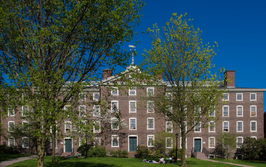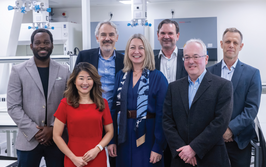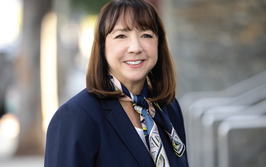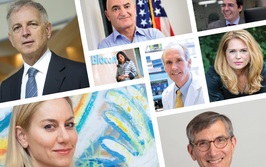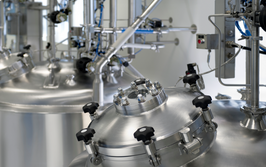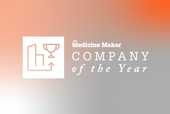Getting Off to a Good Start
Why finding high-quality donor cells is so important in cell therapy development
Priya Baraniak | | 8 min read | Discussion
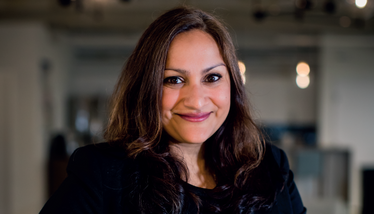
Credit: Author supplied
The complexities of making a living medicine from human cells demand that developers of cell therapies consider many variables. And because the industry is still young, much remains to be learned about optimizing processes to ensure the best products – with some standards either lacking or non-existent. The uncertainty results in companies being forced to spend time and resources well outside their core competencies and proprietary technologies, particularly when it comes to starting materials.
From our interactions with developers, we’ve seen the hope and need to focus on the therapies rather than the starting materials and the intricacies that come with them. The particulars of donor management and tissue sourcing are like an airline pilot learning how flight control systems work. Thus, for far too long, the industry has been complacent about the sourcing and characterization of cellular starting materials, often procrastinating and leaving the issue for later phase development. But something changed. Evolving approaches to interrogating these drug products (and the processes underlying their development) from regulatory agencies – coupled with supply chain disruptions during the pandemic – served as a wake-up call for the future of the industry. We were all reminded that we are still far from sustainability and that strong partnerships across the stakeholder value chain will be critical for success.
Since then, the industry has continued to expand rapidly, with impressive clinical advances by therapeutics developers. With this progress has come a range of enabling tools and technologies. Some, like automated manufacturing platforms and AI, are generating significant attention for their potential to improve scalability, save time, and reduce costs. It is therefore easy to overlook the work needed to secure the supply of critical raw materials, which will remain the backbone of scalable growth upon which the whole field relies. It makes sense that this space needs to mature along with the rest of the cell therapy value chain. By partnering with companies to ensure that the optimal donors and donor-derived materials are procured for their therapies – and educating them in the process, we are seeing better management of the variables inherent to human cell-based therapies. Ultimately, such collaborations will translate to more and better products for patients.
Screening donors
Developing allogeneic cell therapies relies on high-quality, robust, well-characterized and clinically relevant cells as a source material, generally procured from healthy human donors. With human-derived products, there will always be inherent biological variability. Any therapeutic made from them will need to rely on manufacturing processes that can account for this, remaining robust and reproducible despite the inherent variability. Standardizing manufacturing as much as possible includes standardizing the critical cellular raw materials used in the manufacturing process. Donor and tissue screening demands a series of testing, regulatory and ethical requirements, as well as a rising GMP bar to ensure quality and safety as a product moves into clinical trials.
In the context of many cancer immunotherapies, cells are typically isolated from donors’ blood via apheresis, where components of interest (white blood cells) are collected and the rest is returned to the donor. Due to physiological differences between humans, the abundance and potency of cells – and their suitability for a particular therapeutic indication – can vary greatly, making some donors better sources than others for cell therapy developers.
More research is needed to understand which variables are most important for which cell therapy approach – and the answer may differ between T cells, natural killer (NK) cells, and hematopoietic stem cells (HSCs), and all of their subtypes, as well as the intended downstream cell manipulations. For example, some donors will have a greater frequency of HSCs or other rare cell populations in their blood (such as gamma delta T cells or iNKT cells), and there will likely be donor-based differences in the ex vivo expansion potential of these cell populations. Similarly, some donors’ cells will be more receptive than others to genetic modifications like chimeric antigen receptor engineering or induced pluripotent stem cell reprogramming.
The process of donor selection begins with a pre-donation screening, including a survey of demographic, physiologic, and genetic factors (age, sex, BMI, blood type, and HLA genotype), as well as lifestyle factors (for example, smoking history). It also includes testing for a number of infectious diseases as mandated by the FDA and other regulatory agencies. The number of specifications and the requisite testing methodologies can vary depending on the needs of the developer and the relevant regulators. The more specifications and the stricter the regulatory review, the smaller the donor pool. Add to this the typical demographic profile of a donor who donates for money and the pool becomes even smaller.
There are also factors beyond what we know to screen and test for that can influence product quality, meaning that even among donors who meet all specifications, some will donate tissues and cells that will unpredictably be more valuable than others. Changes to donors’ health, their lifestyle choices, and something as simple as whether they were exposed to a common cold can all affect their immune cell profile. In addition, because of the highly reactive nature of our immune systems, any immunophenotype analysis is, in reality, just a snapshot in time. Though some donors may be predisposed to a higher abundance of certain cell subpopulations, this is subject to change on any given day, and there’s no guarantee that a donor who provided exceptional material at one donation will do so at the next. As such, it is imperative that cell-based therapeutics developers curate a robust donor pool that has enough redundancy to weather changes in donor health, as well as natural attrition on account of donors losing interest in donation, relocating to another area, or any number of other reasons.
Emergent technologies – for example, AI, metabolomics and proteomics screening, and genomic analyses – are paving the way for more effective personalized medicines. These technologies may also lend themselves to predictive means of assessing with better accuracy which donors may be well suited for specific tissue and/or cell donations, increasing the efficiency of donor screening programs and donor pool cultivation. In addition, advances in cell isolation and expansion may also obviate the need for large donor pools, if master cell banking strategies may be applied to cells for which such approaches are not a current possibility.
Planning for sustainability
Finding the right donors is just the first step; as therapies scale into the clinic, we also need to be able to recall donors – a major challenge for the field.
The logistics of recruiting and nurturing a robust donor pool must then include identifying donors who are able and willing to return again and again, as needed, and encouraging them to do so. Apheresis itself takes hours, which can be onerous for some donors. And even for those willing to come back, each person can only donate every so often. According to best practices in the industry, blood collection sites should only apherese donors a minimum of every eight weeks, with donor well-being prioritized and the quality of the collection a close second, since the body needs time to replenish the depleted cell compartments. Thus, determining the number of donors needed for a sustainable cell therapy program must take this cadence into account on top of natural attrition rates.
This complexity can become a problem as a program moves through the phases of clinical trials and into commercialization. Developers often start with one regular donor for process development purposes, but, by human clinical testing, they will often need three to five donors. Beyond absenteeism, donors can have transient issues, such as low iron, fever, infection, or dehydration that prevent them from donating on schedule, requiring a temporary deferral. Thus, even if a company only needs a single leukopak per month, it would require two alternating donors, with suitable substitutes available for unforeseen circumstances. By the time a therapy is commercialized, a stable supply chain might require 100 leukopaks per month, from a pool of 300-500 regular donors to minimize risk of insufficient donors and starting materials for manufacturing campaigns as and when needed.
The specific needs of a developer will guide the donor recruitment campaign itself, which is where strong relationships with collection partners are needed. Collection centers will start from a pool of documented donors (ideally in a detailed database including demographics and genotype information), which will help calculate what percentage of donors are likely to meet the developer’s criteria. After accounting for attrition, the collection center will estimate how large the campaign must be and how many known and new donors must be recruited for a single developer’s needs. At some point, most developers will need a dedicated donor pool to ensure the sustained success of their program.
In cell therapy, the prevailing wisdom is that “the process is the product,” and developers are rightly focused on their novel technologies – optimizing manufacturing processes to make the best therapies they can. Strong partnerships with the providers of their source material can ensure they eliminate as many variables as possible and set the stage for sustainability, smoothing the journey from scale-up to commercialization. And I would argue that establishing such relationships early is critical to long-term success.
Chief Business Officer of OrganaBio, a contract technology development and manufacturing organization enabling development and commercialization of cell-based therapies.

